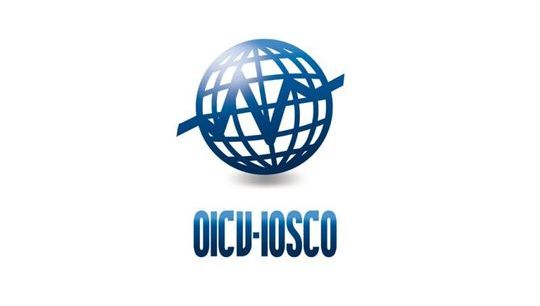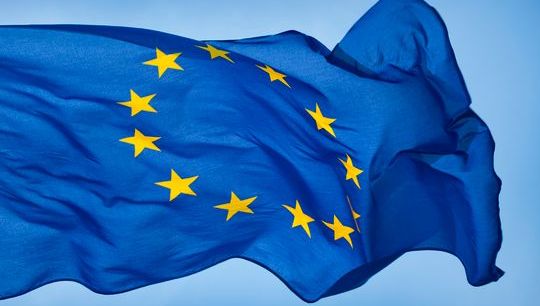A global analysis of ESG disclosure trends
By Molly Frazer, Integrum ESG
Published: 23 June 2025
Introduction
In recent years, regulatory efforts to enhance corporate transparency on Environmental, Social, and Governance (ESG) factors have gained significant momentum. Jurisdictions like the European Union, the United Kingdom, and others have introduced stricter reporting requirements, setting higher standards for corporate ESG disclosures.
Frameworks such as the EU’s Corporate Sustainability Reporting Directive (CSRD), and the Task Force on Climate-related Financial Disclosures (TCFD) have collectively raised the bar for transparency. Despite recent setbacks, such as the SEC climate rule setback, the trend continues toward increasing disclosure requirements.1
This shift in regulation reflects a growing demand for robust, comparable ESG data. For investors, policymakers, and the public, transparency is essential to ensuring accountability. As regulatory measures continue to shape the ESG landscape, the need for consistent and actionable data becomes increasingly important for driving responsible capital allocation and sustainable business practices.
The research team at Integrum ESG has examined the disclosure practices of more than 6,000 global companies over the past five years, enabling an analysis of the evolving landscape of ESG transparency and assessing the effectiveness of regulatory measures in shaping disclosure practices.
In this article, we explore how company-level ESG disclosure is changing across regions, identifying trends in disclosure practices, and highlighting countries that are leading or lagging as global disclosure standards rise.
This analysis examines disclosure practices rather than actual ESG performance. Our Awareness Scores assess how well companies report on key ESG and impact themes, focusing on the disclosure of policies, quantitative figures, certifications, and goals in line with stakeholder expectations. As our focus is on communications and not actual performance, we exclude company Performance Scores, such as how their quantitative CO2 emissions for the year compare to their peer group.
Methodology
Data Collection
This analysis uses disclosure scores from over 6,000 companies globally, covering ESG metrics and impact-related themes from 2020 to 2023. The dataset includes two key dimensions:
- Sustainability awareness score: Reflecting a company’s disclosure of ESG metrics related to sector-specific environmental and social factors, based on the IFRS S1 framework.
- Impact awareness score: Reflecting a company’s alignment with six global impact themes and their contributions to the UN Sustainable Development Goals (SDGs), using the Cambridge Impact Framework.
Both scores are calculated on a scale from 0 to 4, where 0 indicates no disclosure and 4 indicates thorough disclosure. For each dimension, individual topic scores (e.g. carbon emissions or diversity policies within Sustainability) are averaged to form an overall score.
The sustainability and impact scores assess different aspects of corporate disclosure and, when considered together, provide a comprehensive view of a company’s transparency.
Calculations
The company-level scores are aggregated to compute the average score for each country per year, with the year-on-year differences in these scores allowing us to determine the overall trends in disclosure practices. The standard deviation of awareness scores is also computed to assess the variability of disclosures within countries, with a higher standard deviation indicating greater variation in company-level disclosures.
To avoid basing trends on insufficient data, countries with fewer than 10 companies reporting scores for at least two years were excluded from the analysis. As a result, 18 countries were removed from the analysis. 2024 data was not included, as not all companies have published their reports for the 2024 financial year.
Caveats
- Country reporting framework variations: To address potential limitations, it is important to note that variations in ESG reporting standards across countries may impact the comparability of the data. Different reporting frameworks are used across jurisdictions, and so only using one can introduce biases. Likewise, the Impact Awareness Score places significant emphasis on companies’ awareness of specific SDGs, with scores capped if companies do not demonstrate alignment with the relevant SDG. If companies in certain countries are not adhering to the frameworks we use, this may impact the results. This is why we chose to use scores based on two different reporting frameworks, but future analysis may benefit from including more reporting frameworks.
- Uneven company coverage: The number of companies represented across different countries varies significantly, which can impact the comparability and reliability of the data. The limited number of companies reporting in some regions could skew the findings, potentially misrepresenting the true state of ESG transparency in these countries.
Results
Leaders
The following three tables highlight the top 10 countries that have shown the most improvement in disclosure scores from 2020 to 2023. The first table (Figure 1) presents the combined Impact and Sustainability scores, while the following two (Figure 2 and Figure 3) break these scores down separately.
Figure 1 Figure 2
Figure 3
- China’s leadership: China stands out as a top performer across all three assessments. The most significant improvement has been in Impact Scores, reflecting increased company awareness of the United Nations SDGs. This aligns with the SDG Index, which shows that from 2016 to 2023, China moved up from 15th to 13th place among G20 countries.2 The improvement in sustainability scores may also be driven by the ESG disclosure requirements introduced in February 2022, mandating major polluters to report more comprehensively.3
- Strong European performance: Switzerland and Austria have outpaced their peers, showing consistent improvements across all categories. Countries like Poland, Luxembourg, Ireland, and Norway are also making notable strides, reflecting a broader commitment to improving corporate sustainability reporting across Europe.
- Limited representation from emerging markets: While Saudi Arabia and Argentina have made notable progress, the top improvers table lacks broader representation from emerging markets. This is not surprising, given less stringent reporting requirements, but indicates potential for significant improvements in the coming years as these markets work to align with global ESG standards.
Laggers
The following tables display the bottom 10 countries with the least improvement in disclosure scores from 2020 to 2023.
Figure 4 Figure 5
Figure 6
- Philippines and Mexico stagnation: Both the Philippines and Mexico consistently fall into the stagnation zone across combined, sustainability, and impact scores. However, with mandatory sustainability reporting set to begin in 2026, improvements in disclosure scores are likely as these countries align with global standards.4,5
- Challenges in Impact Reporting: There is a more significant stagnation in impact awareness scores than sustainability scores, which is notable as the deadline for the UN SDGs approaches in 2030. Companies may be hesitant to disclose their SDG contributions, acknowledging the challenges in meeting these ambitious targets. However, there has still been a general improvement in impact awareness scores over time.
- Portugal’s Stable Position: Although Portugal has shown slower progress over the analysed period, it continues to uphold strong disclosure practices, achieving the highest average combined score (3.03). This stability indicates that the recent stagnation is less of a concern, as Portugal already demonstrates strong disclosure practices. Additionally, Portugal displays a relatively low standard deviation in company-level scores across the years, reflecting consistency in disclosure practices among companies.
Figure 7 Figure 8
Perhaps unsurprisingly, large economies such as the United Kingdom and the United States do not appear among the top or bottom performers, attributed to their consistent, more gradually improving, average scores.
In the UK, corporate disclosure requirements such as the Streamlined Energy and Carbon Reporting (SECR), Gender Pay Gap Reporting and the Modern Slavery Act 2015 - Transparency in Supply Chains guidance came into force pre 2020 therefore any improvements to disclosure driven by these requirements would likely have occurred before our analysis period.
Conversely, the USA lacks comprehensive federal-level ESG disclosure mandates for corporates. This absent regulatory landscape contributes to high variability in company disclosures, as evidenced by the higher standard deviations in their disclosure scores.
Conclusion
This analysis demonstrates significant progress in ESG transparency, with all countries showing improvements in disclosure practices. Notably, China, Switzerland, and Austria have led the way, while some emerging markets, such as Saudi Arabia and Argentina, show promising progress.
While emerging markets continue to face challenges, the introduction of mandatory reporting regulations in Mexico and the Philippines signals a positive shift toward greater transparency in the future. As these markets align with global standards, investors can expect long-term value growth. Investors should actively engage with companies in these regions to prioritise transparent ESG reporting and encourage alignment with international reporting standards.
Overall, the results show that regulatory pressures are having the desired effect, as evidenced by the fact that countries lacking such pressures are not experiencing the same level of improvement in disclosure practices. This highlights the crucial role of regulatory frameworks in driving progress toward greater corporate transparency.
1 https://greencentralbanking.com/2025/02/17/sec-moves-to-freeze-its-climate-disclosure-rule/
5 https://senecaesg.com/insights/mexico-mandates-sustainability-reporting-for-securities-issuers/








